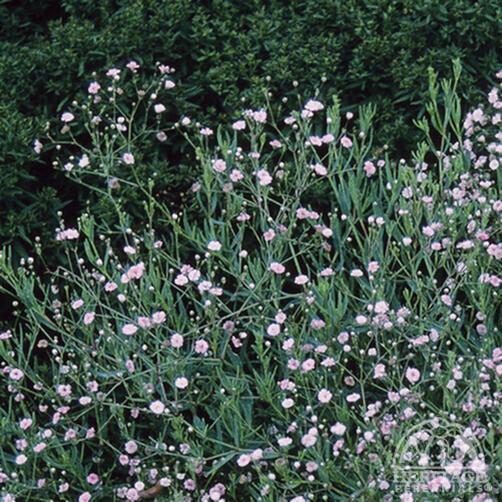Gypsophila paniculata ‘Pink Fairy’
Plant number: 1.240.200One of the most widely used cut flowers, Baby’s Breath is also popular for its airy, cloud-like display in the summer border. Plants form a bushy, upright mound that bears thousands of tiny pale-pink double flowers, held in branching heads. Remove faded flowers to encourage repeat blooming in the fall. Because this bushes out in mid-summer, it is often recommended as a neighbor to Oriental Poppies, which go dormant after blooming; the Baby’s Breath will fill in the gap left in the garden. Drought tolerant, once established. Nice compact habit, making this useful for edging.In a number of parts of North America, G. paniculata has become invasive or even been declared a noxious weed. As a result, it may be illegal to plant in your garden. It is no longer produced and sold by Heritage Perennials. Further details for |
| All 9 results here | Alphabetical list of all 4,000+ perennials here |
Gypsophila paniculata ‘Pink Fairy’
Plant number: 1.240.200One of the most widely used cut flowers, Baby’s Breath is also popular for its airy, cloud-like display in the summer border. Plants form a bushy, upright mound that bears thousands of tiny pale-pink double flowers, held in branching heads. Remove faded flowers to encourage repeat blooming in the fall. Because this bushes out in mid-summer, it is often recommended as a neighbor to Oriental Poppies, which go dormant after blooming; the Baby’s Breath will fill in the gap left in the garden. Drought tolerant, once established. Nice compact habit, making this useful for edging.In a number of parts of North America, G. paniculata has become invasive or even been declared a noxious weed. As a result, it may be illegal to plant in your garden. It is no longer produced and sold by Heritage Perennials. Further details for |






